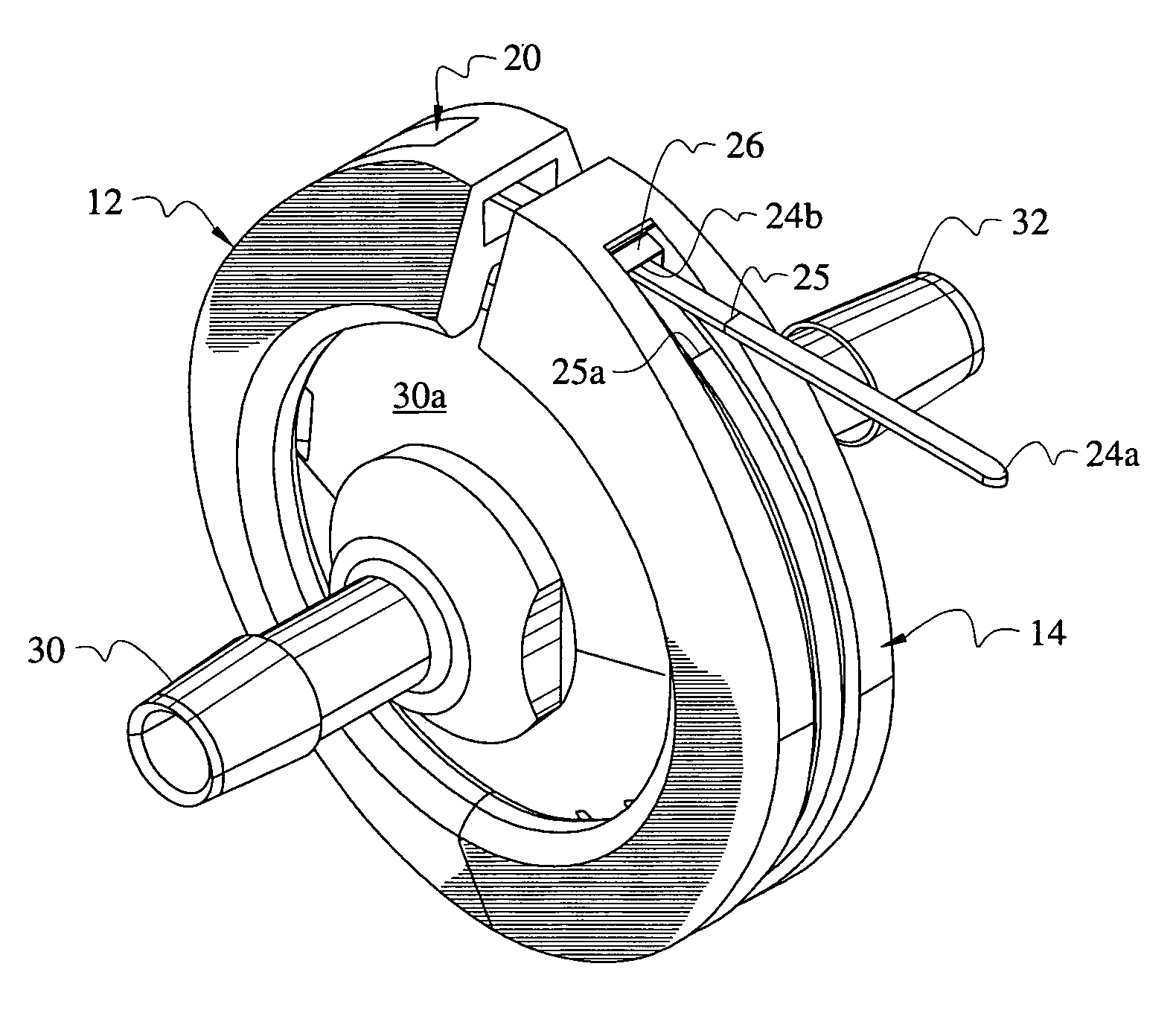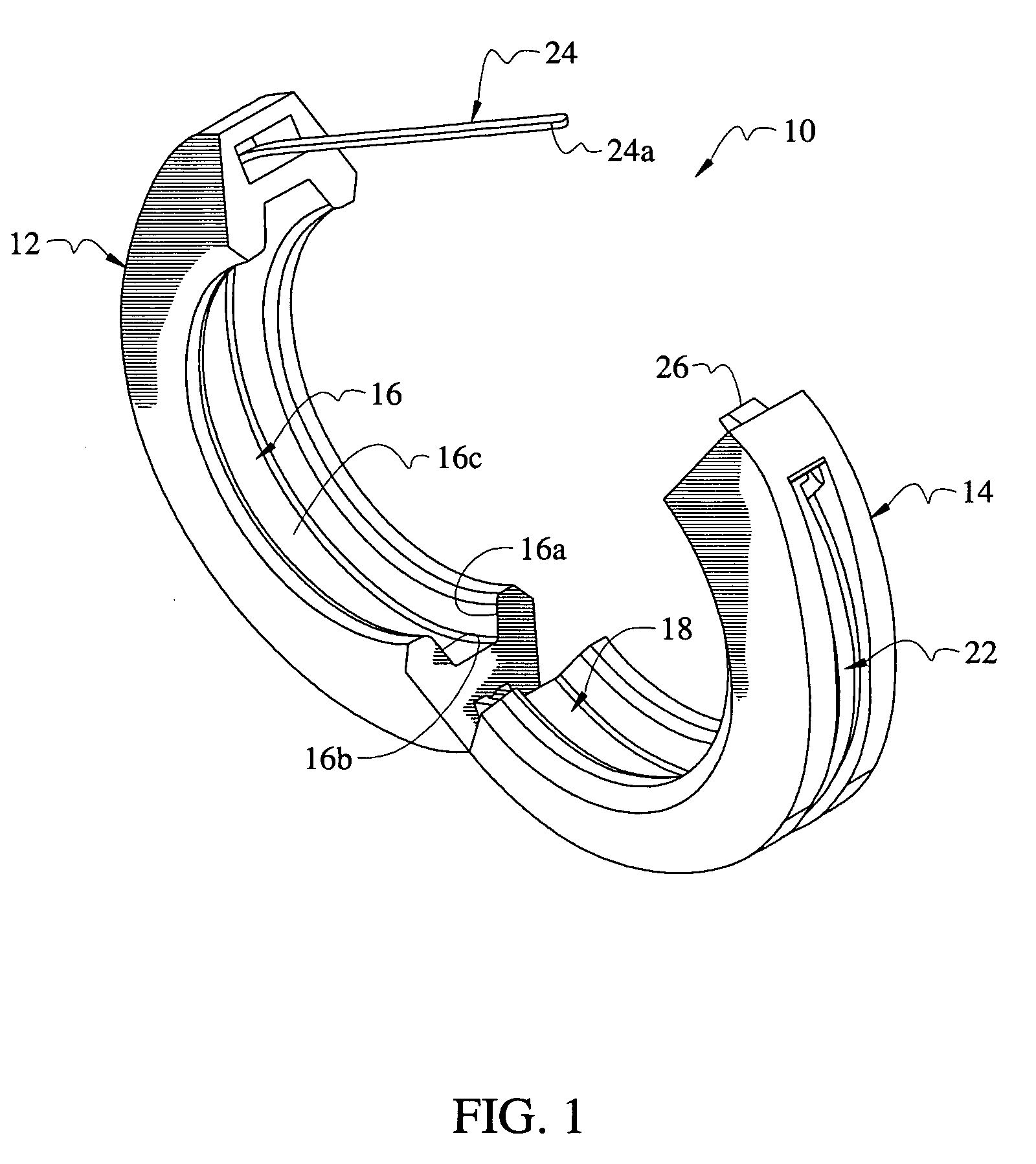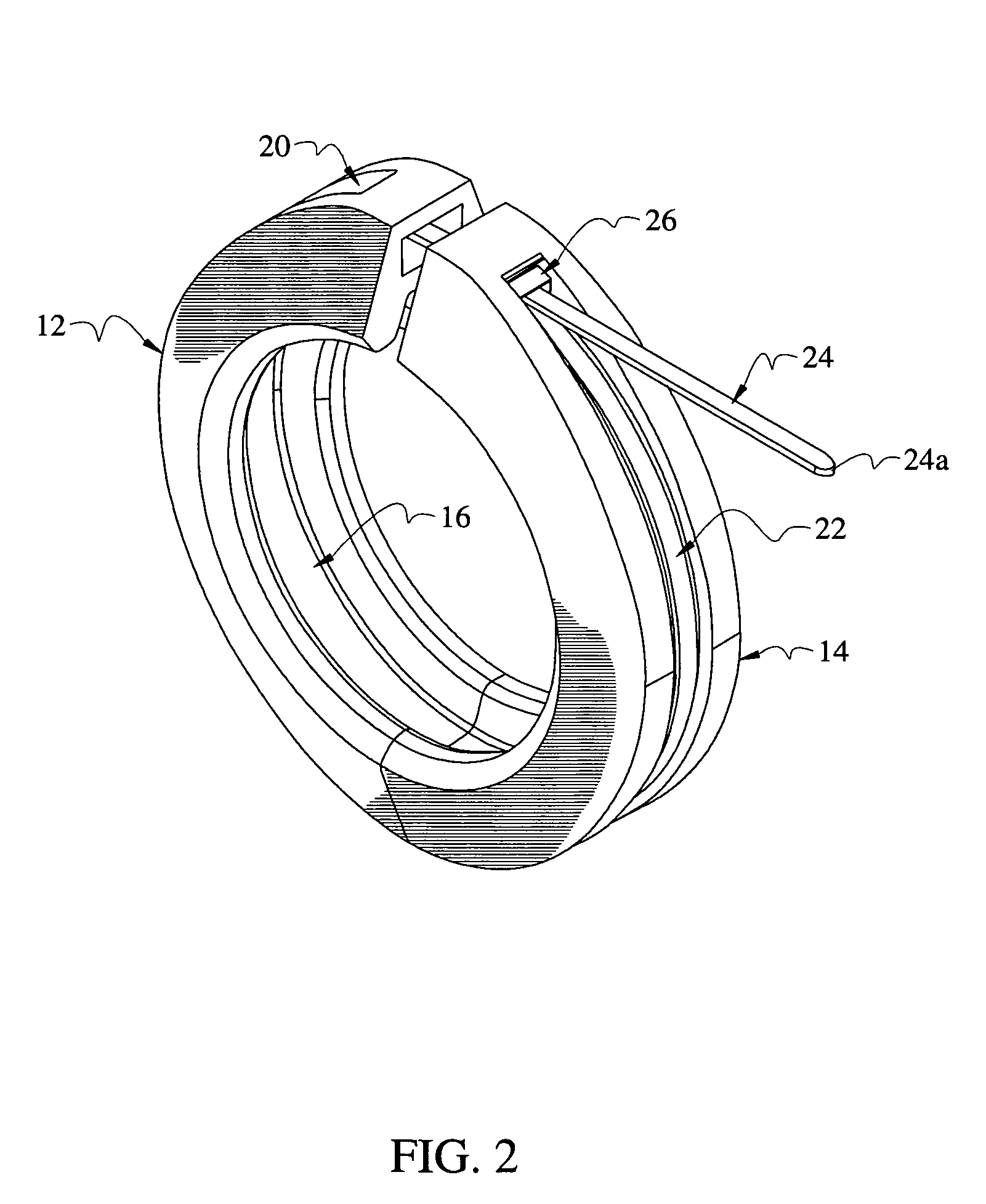Sanitary clamp
a technology for sanitary fittings and clamps, which is applied in the direction of hose connections, machine supports, other domestic objects, etc., can solve the problems of compromising the fluid tightness and pressure resistance of the connection, unable to apply an optimal amount of force, and unable to achieve optimal for
- Summary
- Abstract
- Description
- Claims
- Application Information
AI Technical Summary
Benefits of technology
Problems solved by technology
Method used
Image
Examples
first embodiment
[0047]FIG. 3 depicts a first sanitary fitting 30 having flange 30a and a second sanitary fitting 32 having a similar flange, not depicted. Free end 24a of flexible cable tie 24 has been pulled through catch 26 to bring the first opposed ends of semicircular parts 12, 14 in close proximity to one another. As mentioned earlier, the tapered sidewalls of the interior channels drive the opposed flanges axially toward one another as desired as cable tie 24 is tightened. The amount of tightening required is predetermined and a first distance mark 25 is imprinted upon cable tie 24 near its distal free end 24a. In a first embodiment, a second distance mark 25a is imprinted on cable tie 24 at a predetermined location near its proximal end. A user pulls free end through catch 26 until first distance mark 25 is in registration with second distance mark 25a. The user stops pulling when said first and second distance marks are in alignment with one another so as not to over-tighten said flexible ...
third embodiment
[0056]Cable ties are typically sold in boxed quantities of twenty-five (25) and an economically-disposable, limited use, non-calibrated cable tie tensioning gun is usually included. Such an inexpensive tool, used in conjunction with the novel cable ties having distance markers, is just as effective as an expensive, commercially available, calibrated cable tie gun for bringing the tension in a cable tie to a set force as indicated on the gun. There are no cable tie guns or torque wrenches that are economically disposable. In a third embodiment, depicted in FIG. 9, a pair of “S”-shaped lobes 34, 36 are inverted with respect to one another so that they mate with one another when the clamp is closed. Lobes 34, 36 capture flexible tubing that is positioned between them in a pinching action. More specifically, each lobe engages the flexible tubing along a transverse line of contact when such tubing is disposed in sandwiched relation between said lobes. Cable tie 24 is tightened by a prede...
PUM
| Property | Measurement | Unit |
|---|---|---|
| flexible | aaaaa | aaaaa |
| length | aaaaa | aaaaa |
| distance | aaaaa | aaaaa |
Abstract
Description
Claims
Application Information
 Login to View More
Login to View More - R&D
- Intellectual Property
- Life Sciences
- Materials
- Tech Scout
- Unparalleled Data Quality
- Higher Quality Content
- 60% Fewer Hallucinations
Browse by: Latest US Patents, China's latest patents, Technical Efficacy Thesaurus, Application Domain, Technology Topic, Popular Technical Reports.
© 2025 PatSnap. All rights reserved.Legal|Privacy policy|Modern Slavery Act Transparency Statement|Sitemap|About US| Contact US: help@patsnap.com



